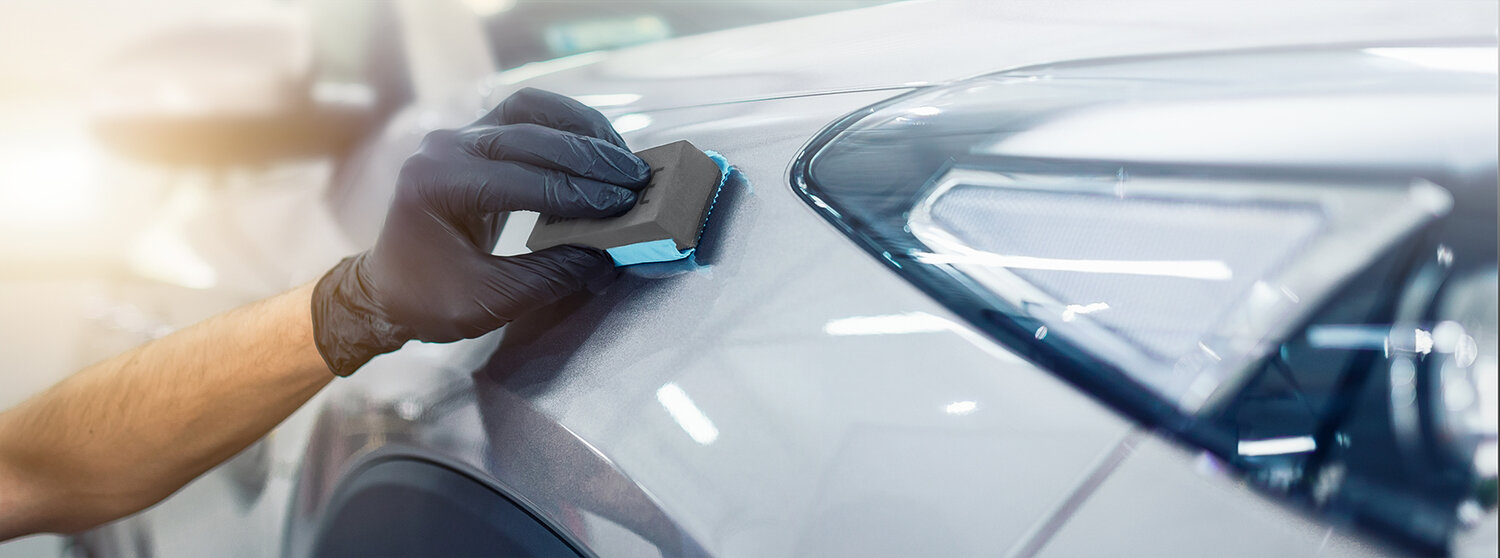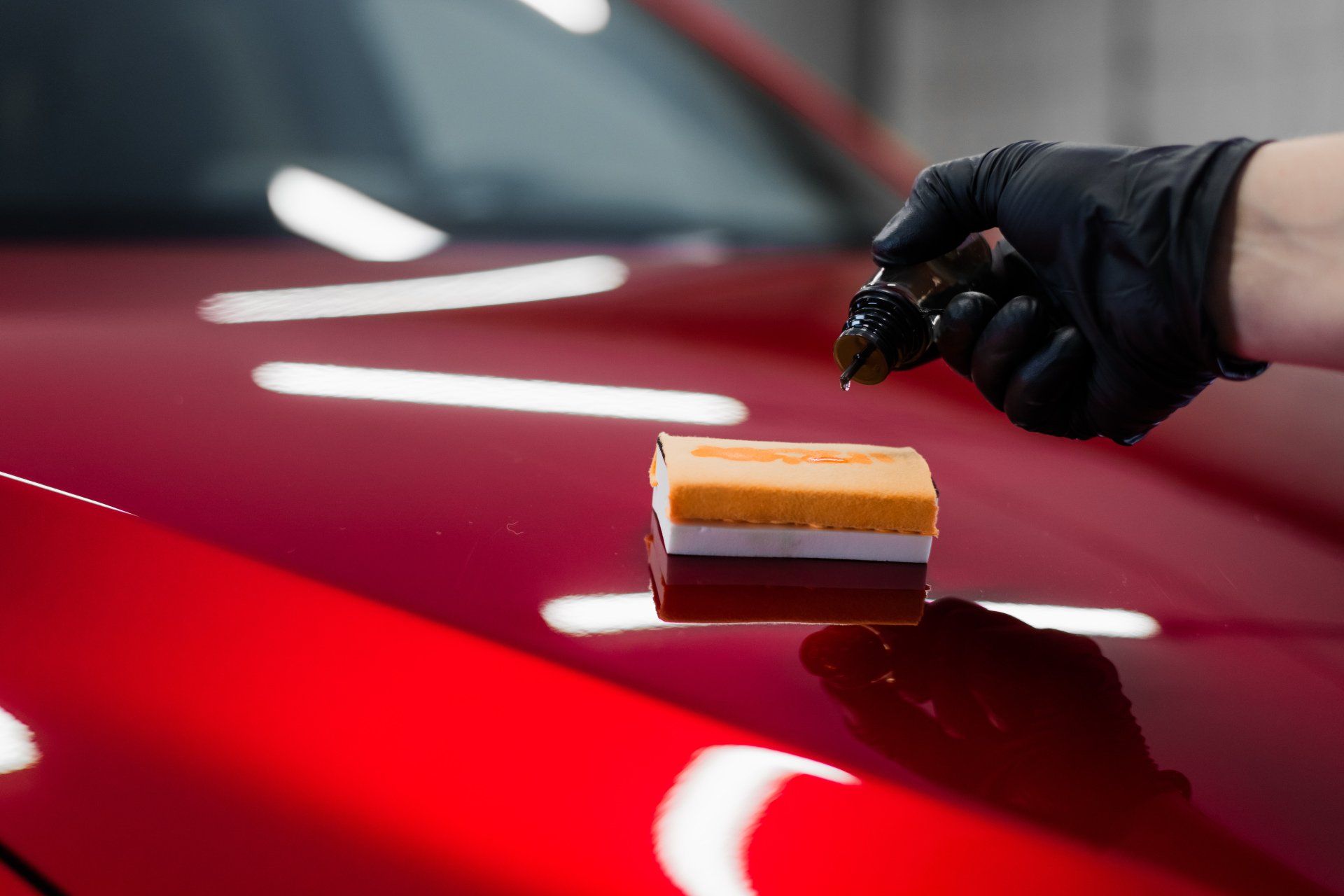The Ultimate Guide to Ceramic Coating: Advantages and Application Techniques
The Ultimate Guide to Ceramic Coating: Advantages and Application Techniques
Blog Article
Comprehending the Scientific Research Behind Ceramic Coating for Enhanced Lorry Durability
The science of ceramic finish is revolutionizing automobile upkeep by providing an awesome shield against rough environmental variables. At its core, this modern technology takes advantage of the power of silicon dioxide and titanium dioxide to create a sturdy, safety layer. What precisely makes these compounds so efficient in safeguarding a vehicle's exterior? As we explore the complex composition and application process of ceramic finishes, we uncover the keys behind their remarkable defense and long life. How does this compare to typical approaches, and what implications does it have for lorry maintenance in the long-term? The solutions may shock you.

Make-up of Ceramic Coatings
Ceramic coatings are mostly made up of silicon dioxide (SiO2), which is obtained from all-natural materials like quartz and sand. In enhancement to SiO2, ceramic finishes often incorporate titanium dioxide (TiO2) for improved UV protection and increased resistance to ecological toxins.
The formula of ceramic layers is a thorough procedure where the concentration of SiO2 can dramatically influence the coating's performance. Greater SiO2 web content usually causes greater resilience and hardness, adding to the covering's ability to stand up to scrapes and chemical etching. However, the equilibrium of components is crucial; way too much SiO2 can make the covering breakable, while insufficient can jeopardize its safety residential properties.
Makers might additionally integrate additional substances, such as polysilazane, to enhance adaptability and convenience of application. These additives boost the finish's hydrophobic properties, making sure water and contaminants bead off the surface easily. This crafted structure underscores the efficiency of ceramic finishings in securing a car's exterior against a range of damaging conditions.
Application Refine Discussed
Applying a ceramic layer to a car entails numerous essential steps, each vital to guaranteeing optimal adhesion and performance of the safety layer - ceramic coating. The procedure starts with a detailed wash and decontamination of the automobile's surface area to remove dirt, gunk, and previous waxes or sealants. This action is critical as any pollutants left on the surface can impede the layer's capacity to bond effectively
Following the initial cleansing, the next action includes polishing the lorry to eliminate any type of blemishes, such as swirl marks or scrapes. Sprucing up guarantees a smooth surface, which is important for the layer to stick properly and offer an uniform finish. After polishing, a surface area preparation spray is utilized to remove any staying deposits and make sure that the surface is completely clean.

Protective Benefits
Typically hailed for its remarkable safety high qualities, a ceramic finish supplies numerous benefits that considerably Learn More boost automobile toughness. At its core, ceramic finishing creates a hard, semi-permanent barrier over a lorry's outside, which serves as a shield versus different environmental dangers. This sophisticated layer of security properly defends against UV rays, oxidation, and fading, keeping the automobile's initial paint and luster. It reduces the dangers posed by damaging contaminants such as bird droppings, tree sap, and road gunk, which, if left unattended, can bring about long-term damage.
Moreover, ceramic coatings exhibit hydrophobic buildings, suggesting they repel water and help with a self-cleaning impact. This feature decreases the adherence of dirt and mud, simplifying maintenance and cleaning processes. The finishing's resistance to helpful site chemical etching better makes sure that the vehicle's surface remains unblemished despite direct exposure to rough cleaning representatives and contaminants.
In addition to these safety advantages, the ceramic finish boosts an automobile's visual allure by developing a shiny surface that accentuates color deepness and quality. This not just sustains the vehicle's aesthetic appeal yet also adds to its lasting worth by protecting the integrity of its exterior gradually.
Contrasting to Conventional Techniques
Unlike typical approaches of vehicle protection, such as waxing or sealers, ceramic coverings supply an even more resilient and durable remedy. Where waxes and sealants commonly provide a short-lived layer of defense, typically calling for reapplication every couple of months, ceramic finishes create a semi-permanent bond with the car's paint. This bond produces a protective layer that is immune to ecological contaminants, UV damage, and small abrasions.
Standard waxes are largely composed of natural parts like carnauba wax, providing a shiny finish yet doing not have the durable protective qualities of ceramic layers. Sealers, while synthetic and offering somewhat better durability than waxes, still drop brief in contrast to the durability and chemical resistance of ceramic coverings. The sophisticated innovation of ceramic layers includes nanotechnology, which permits them to complete microscopic imperfections in the paint surface, leading to a smoother and more hydrophobic surface.
In terms of application, ceramic finishes need a more careful procedure, often requiring expert installment to guarantee optimal efficiency. This contrasts with the fairly straightforward application of waxes and sealers, which can be applied in the house. The superior protection and visual improvement offered by ceramic layers justify the financial investment for those seeking lasting automobile preservation.
Durability and Maintenance
Just how does the long life of ceramic finishes translate right into ease of upkeep for vehicle owners? The advanced formula of ceramic coatings offers a robust safety layer on the car's surface area, which dramatically expands the lifespan of the auto's outside surface.
Furthermore, the hydrophobic nature of ceramic layers enables water and various other fluids to bead up and roll off the surface, carrying dust and particles with them. While the covering itself is durable, it is not completely maintenance-free. Thus, ceramic finishings supply a valuable equilibrium redirected here between long-term sturdiness and streamlined upkeep for lorry treatment.
Conclusion
Ceramic finishes, with their innovative chemical structure of silicon dioxide and titanium dioxide, give a powerful obstacle against environmental damages, dramatically enhancing vehicle longevity. When contrasted to traditional methods, ceramic finishes supply superior protection versus UV rays, oxidation, and chemical etching - ceramic coating.
The formulation of ceramic layers is a meticulous procedure where the concentration of SiO2 can dramatically affect the coating's efficiency.Applying a ceramic covering to a vehicle involves numerous important steps, each important to ensuring ideal attachment and performance of the protective layer.Usually hailed for its exceptional safety top qualities, a ceramic layer provides numerous benefits that dramatically enhance car longevity. The sophisticated solution of ceramic finishes provides a robust protective layer on the lorry's surface, which considerably expands the lifespan of the car's outside coating.Ceramic finishes, with their innovative chemical structure of silicon dioxide and titanium dioxide, supply an awesome obstacle versus environmental damage, considerably boosting car resilience.
Report this page